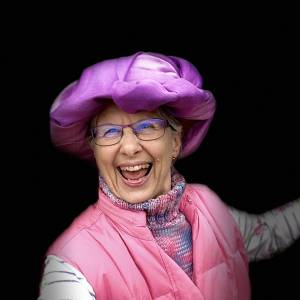A SEAT WITH A VIEW - OUTSIDE CHISBURY CHAPEL
When we found the dereliction at Harrow Farm a couple of weeks ago, I was looking on the internet to find out more about the area and came across a reference to Chisbury Chapel. We realised that Chisbury was a little village just up the road from Harrow Farm, and as the Chapel was no longer in use, thought it might be derelict and a good candidate for Derelict Sunday.
After watching Church online this morning, off we went, but before we got to the village of Chisbury, we stopped in the gateway of a field and had our picnic - looking out over the beautiful Wiltshire countryside. It was a lovely day and there were balers working in the fields on the horizon, so of course, I took lots of photographs - the sky was blue, the clouds were fluffy and it was just wonderful to be out on such a gorgeous summer’s day.
However, on reaching the village and following the sign for Chisbury Chapel, we realised that it’s not actually derelict in the true sense of the word. To get to it we had to drive up a very narrow lane, which wasn’t made up but was just two tracks either side of a grassy strip. When we got to the top, we were amazed to see a large parking area, which was obviously part of Chisbury Manor Farm, although the Manor and/or farmhouse couldn’t be seen, but there were lots of outbuildings and barns with evidence of horses.
I found out the following from a notice inside the Chapel building and also from Mr. Google when we got home, which may interest you as you look at my collage for today - I haven't done "A Seat With A View" for quite sometime, so hope you enjoy this one.
“Dating from the 13th century, St. Martin’s Chapel, which measures 58 by 26 feet, was built next to the Manor House in the hamlet of Chisbury, Wiltshire, as a Chapel of Ease – in other words it was more convenient. It was originally constructed by the Lord of Chisbury Manor not only to assert his high social status but also to enable the household of the Manor, as well as local people, to attend services and pay their taxes without having to travel to the parish church at Great Bedwyn, about a mile and a half away. The walls are formed mostly of flint pebbles with sandstone used for the door and window frames, plus some red bricks from a later period. There are written records of it from 1246 onwards and its surviving architecture is contemporary with that period.
Between 1496 and 1518, St. Martin’s lacked a priest but services were held there after that date until 1547, after which the chapel was closed, as part of Henry VIII's Dissolution of the Monasteries. The building was subsequently used as a barn, part of a farm which is still in operation. The thatch and wood chapel roof were added in the 18th century; there are no surviving interior furnishings, but the fabric is intact, including six windows, some with remnants of Gothic tracery, plus one original doorway. The walls are faced with flint and this chapel represents a fine example of a country chapel from this period.
There are two vertical lines within the plaster of the side walls that mark where the rood-screen – a timber partition surmounted by a cross – once separated the altar from the nave. There is also a red medieval consecration cross painted on the wall just inside the Chapel; these were painted on the walls of a church during the consecration ceremony, marking the religious status of the building.
The nearby hill fort, including the chapel, was designated as a scheduled ancient monument in 1925. The chapel is in the guardianship of English Heritage.”
I realise this is quite a lengthy read, but I do like to give readers the background to the places we visit - and if you don’t want to read all about it, then you can just skip it. We were entranced by this tiny Chapel and it was the “icing on the cake” when Mr. HCB found the seat outside looking eastwards over towards Newbury. We both sat there for quite some time just enjoying the view and being together in the sunshine.
We think that Monet was right when he said this:
“I’m enjoying the most perfect tranquillity,
free from all worries, and in consequence
would like to stay this way forever,
in a peaceful corner of the countryside like this.”
Claude Monet

Comments
Sign in or get an account to comment.


